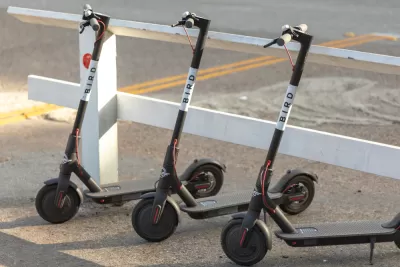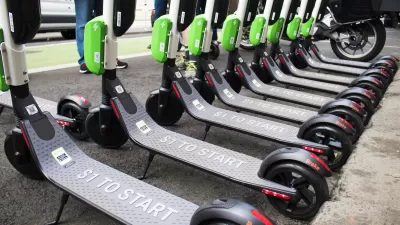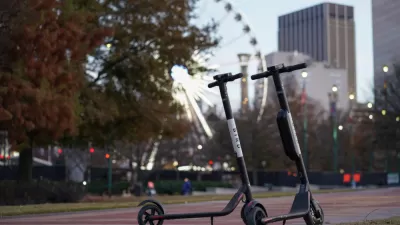It's a temporary experiment, but Santa Monica will not cap the number of scooters operated by private companies in the city.

The city of Santa Monica has rendered a decision about the future of dockless scooters in the beachfront community—and gone a slightly different way than some of the more draconian approaches of cities like San Francisco and Austin.
Melissa Etehad and Tracey Lien report on the proceedings of a City Council meeting earlier this week resulting in a 16-month pilot program "that will allow electric-scooter and electric-bike rental companies to continue operating in the city." The city is presenting the pilot program as "a fact-finding mission to help the city craft longer-term regulations."
"Under Santa Monica’s pilot program, electric-scooter and electric-bike companies will have to apply for a permit and pay an annual fee of $20,000 and a per-device fee of $130," Etehad and Lien explain of the terms of the pilot program.
Companies that receive permits will also have to agree to create interactive safety education for riders, such as sending push notifications to customers’ phones to tell them if they have been riding unsafely. They’ll also have to share real-time data with the city; ensure that their scooters are evenly distributed throughout the city; establish a 24-hour hotline to field complaints; and make sure that improperly parked scooters are promptly moved.
On the important question of whether the city should cap the number of scooters companies are allowed to operate in the city, the article explains that decision was made not to limit the number to avoid the possibility that companies would saturate more dense parts of the city, leaving under-serve neighborhoods without the potential mobility benefit of the scooters.
FULL STORY: Santa Monica tells scooter companies: You can stay — but there are new rules

Alabama: Trump Terminates Settlements for Black Communities Harmed By Raw Sewage
Trump deemed the landmark civil rights agreement “illegal DEI and environmental justice policy.”

Planetizen Federal Action Tracker
A weekly monitor of how Trump’s orders and actions are impacting planners and planning in America.

The 120 Year Old Tiny Home Villages That Sheltered San Francisco’s Earthquake Refugees
More than a century ago, San Francisco mobilized to house thousands of residents displaced by the 1906 earthquake. Could their strategy offer a model for the present?

Indy Neighborhood Group Builds Temporary Multi-Use Path
Community members, aided in part by funding from the city, repurposed a vehicle lane to create a protected bike and pedestrian path for the summer season.

Congestion Pricing Drops Holland Tunnel Delays by 65 Percent
New York City’s contentious tolling program has yielded improved traffic and roughly $100 million in revenue for the MTA.

In Both Crashes and Crime, Public Transportation is Far Safer than Driving
Contrary to popular assumptions, public transportation has far lower crash and crime rates than automobile travel. For safer communities, improve and encourage transit travel.
Urban Design for Planners 1: Software Tools
This six-course series explores essential urban design concepts using open source software and equips planners with the tools they need to participate fully in the urban design process.
Planning for Universal Design
Learn the tools for implementing Universal Design in planning regulations.
Clanton & Associates, Inc.
Jessamine County Fiscal Court
Institute for Housing and Urban Development Studies (IHS)
City of Grandview
Harvard GSD Executive Education
Toledo-Lucas County Plan Commissions
Salt Lake City
NYU Wagner Graduate School of Public Service





























